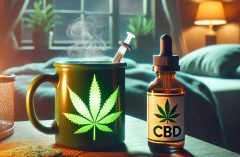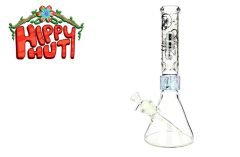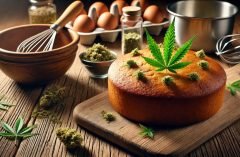Table of Contents [show]
What is it that has to happen so that these raw acids are converted into the activated forms that are in demand? Simply, put, the raw compounds need to undergo decarboxylation, a process responsible for this conversion into activated cannabinoids. Let us take a look at his process, see what it is and why it is so important.
What Is Decarboxylation?
To make things clear, decarboxylation refers to the process of heating up the material found in hemp or cannabis with the aim of activating the cannabinoids within. Once they are activated, those cannabinoids react with the endocannabinoid system (ECS) inside our bodies and produce all kinds of beneficial effects, from helping you sleep better to treating your pains. The inactive material isn’t able to produce those effects.
You are now probably wondering how the whole process of decarboxylation goes. The first thing you need to know is that this process happens completely naturally and organically for the products that are smoked. The heat from the flame does the whole trick. When it comes to edibles and tinctures, though, this has to be done by hand before the products are used. Otherwise, those products won’t have any effects.
Let me now explain the process as quickly and as simply as possible. As I have already mentioned, the acids found in cannabis are inactive cannabinoids. They have an extra carboxyl ring attached to them or, more precisely, to their molecular chain. During the decarboxylation procedure, their molecular structure changes.
Read more about
The change that happens is as follows. When heated up, a carboxyl group is actually released from this structure as CO2 and the remaining hydrogen atom is retained. That way, the previously inactive substance is turned into an active one and it interacts with your body in a completely different way than if no decarboxylation was done.
Let me use the example of THC to help you understand this better. We all know that THC is the psychoactive compound and its inactive counterpart is known as THCA. If you smoke marijuana, you will get intoxicated by THC. If you simply chew the plant, intoxication won’t occur, simply because the compound wasn’t heated in order to turn from inactive THCA to active THC.
The same goes for CBD and CBDA, only without the psychoactive effect. Plus, CBD is usually used in other types of products, such as edibles and oils, which means that the decarboxylation process needs to be done in advance, so that the compound gets activated. If this step is skipped, then the products wouldn’t be able to react with the cannabinoid receptors in your body. It’s pure science. Go here to learn more about it.
Why Is It Important?
If you have been paying close attention to the explanations about how the whole process works, I assume you can now guess on your own why decarboxylation is so important. Still, let me make it as clear as possible, just in case you didn’t grasp it already. Without this procedure, your CBD oils, tinctures, edibles and other types of consumables wouldn’t have the same effects as they do now.
Why is that so? Well, this answer is also rather obvious. You use no heat while consuming these products. You wouldn’t be able to turn their inactive substances into activated ones. And, in order for them to be beneficial for you, they need to be activated. That’s why those very substances need to be heated up previously.cDecarboxylation is the method of heating them up and converting the compounds, such as CBD and THC into active ones. After this is done can you expect the CBD you are consuming to interact with your endocannabinoid system and provide you with the benefits you are looking for. To put things simply, without decarboxylation, your CBD oil would be nothing but a bottle of inefficient liquid.




